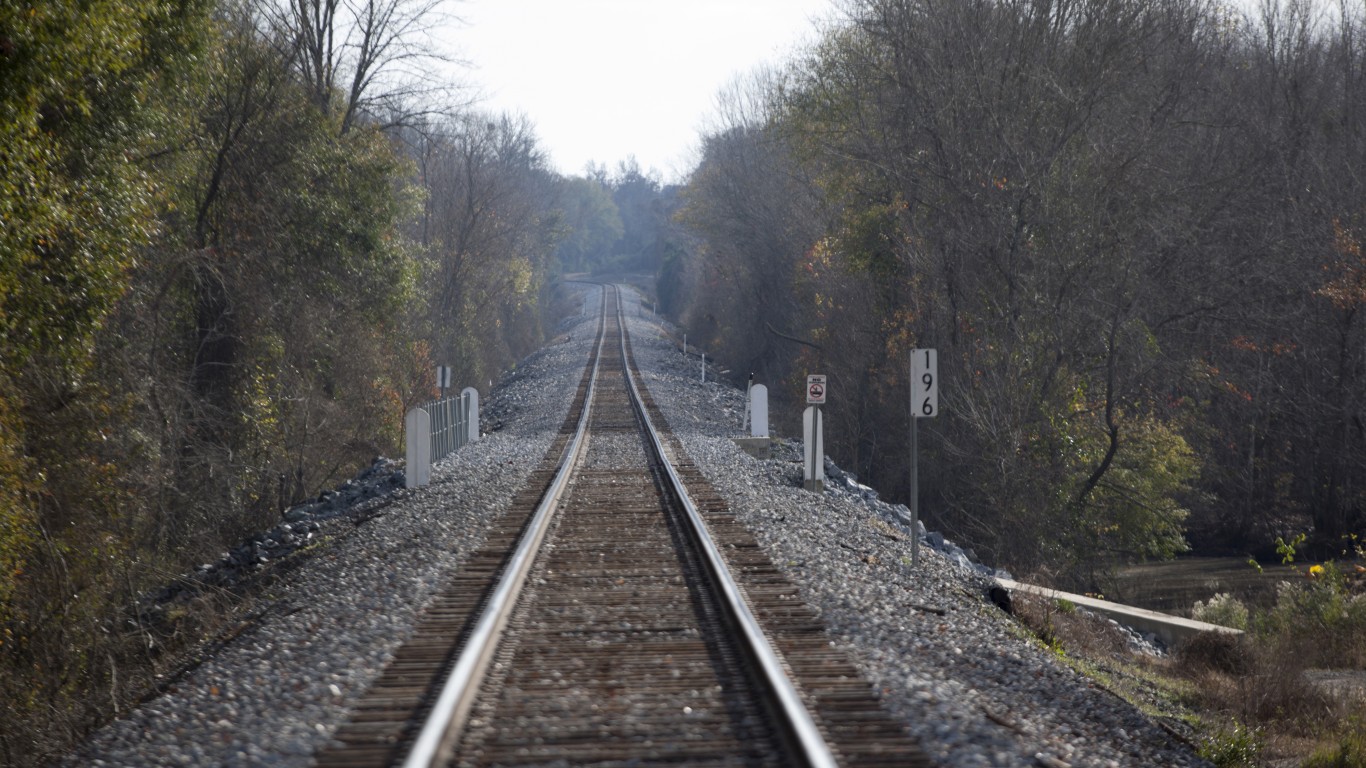

If you are able to drive anywhere that has railroads, there is a good chance that you are not going to be delayed by as many train crossings. If you are delayed due to a train crossing, your impatient waiting times may be much shorter in the COVID-219 recession.
Monitoring freight and rail traffic is one of the primary means of knowing what is happening inside the economy on a live basis. The Association of American Railroads (AAR) has released its weekly data showing that U.S. rail traffic was down 22.1% from a year ago for the week ending on May 9, 2020.
The news is showing a dire situation for the railroad industry within transportation, and it had read-through to several other industries as well. Shares of the top three U.S. rail companies were all lower on the day.
Total rail traffic was 412,549 carloads and intermodal units. Of the total, the carloads were down 28.4% to 185,144 cars and weekly intermodal volume was down 16% to 227,405 containers and trailers.
One key aspect to this report that needs to be considered. The AAR report confessed that none of the 10 carload commodity groups posted an increase at all compared to the same week a year ago, and the report looks bleak for the automotive, coal and steel industries.
Coal was down by 34,111 carloads to 46,515 for the week. The automotive industry, for motor vehicles and auto parts, fell by 14,876 carloads to a mere 2,108. The segment for metallic ores and metals, including the steel industry, fell by 7,513 carloads to 13,624. Those trends have been persistent for prior weeks.
Regardless of your job or role in the economy, railroad traffic can show a live and key reading on the economy of physical goods. The AAR report showed that cumulative rail volume of 4,158,730 carloads was down 12.7% for the first 19 weeks of 2020. The 4,501,113 intermodal units measured was down 11.2%, and the cumulative reading year-to-date was running 11.9% lower than the same weeks of 2019.
In terms of total carloads counted, the AAR report indicated that last week was the second lowest since its data began in 1988. The long and short of the matter is that a recovery in autos, coal and steel sectors is not being seen in any current activities. Then again, it’s hard to expect that more items would be sent around the country with so many factories and plants closed or running on skeleton crews.
The stock prices were all weak within the railroad sector on Wednesday.
Union Pacific Corp. (NYSE: UNP) traded down 1.2% at $152.15 on Wednesday, down about 20% from a 52-week high of $188.96. Union Pacific’s market cap is $105 billion.
CSX Corp. (NYSE: CSX) was down 3% at $62.20 in mid-afternoon trading, and that is 23% lower than its 52-week high of $80.62. CSX has a $49 billion market cap.
Shares of Norfolk Southern Corp. (NYSE: NSC) retreated 2% to $163.40, and that is still down over 25% from its 52-week high of $219.88. Its market cap is $43 billion.
Apparently we really are all in this together as far as North America as a whole. The AAR also showed that Canadian railroad traffic was down 21.1% at 67,481 carloads for the week, and Mexican railroads were down 36.1% at 14,022 carloads for the week.
Sponsored: Want to Retire Early? Here’s a Great First Step
Want retirement to come a few years earlier than you’d planned? Orare you ready to retire now, but want an extra set of eyes on your finances?
Now you can speak with up to 3 financial experts in your area for FREE. By simply clicking here you can begin to match with financial professionals who can help you build your plan to retire early. And the best part? The first conversation with them is free.
Click here to match with up to 3 financial pros who would be excited to help you make financial decisions.
Thank you for reading! Have some feedback for us?
Contact the 24/7 Wall St. editorial team.
 24/7 Wall St.
24/7 Wall St.


